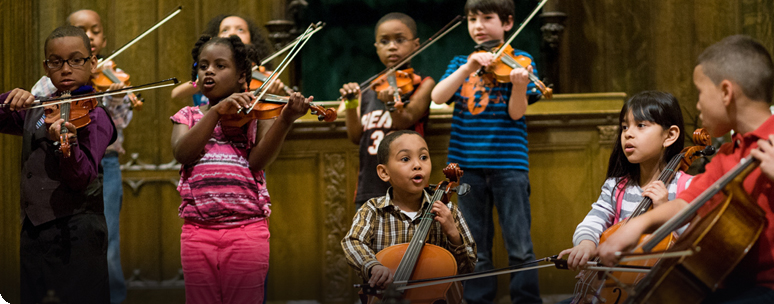The culture doesn’t speak, people do."The culture doesn’t speak, people do." -Maxine Greene Reflections on Conversations Across Culture: Community Arts Education, Exploring Possibilities, a conference at Teachers College, Columbia University, November 9 & 10, 2007. (Or, "Minna, Sebastian, Arlyn & Rachel’s trip to the Big Apple.") We talk about empowerment. But what kind of power are we talking about? The overwhelming answer at this conference was the power of the individual voice. This conference reminded us of the long history of Community Arts Education, shared with us some of the great work going on in other branches of the arts, but also reminded us of what makes CMW so gosh darn unique in the field today. As for a history, the idea behind settlement houses was that the reformers would settle there rather than swoop in from somewhere else. Lillian Wald consciously worked to distance herself from the elite superiority of reformers that characterized the times in developing the Henry Street Settlement with immigrants on the Lower East Side of Manhattan. We saw students’ own work from the Education Video Center, where students have filmed a powerful documentary about Hurricane Katrina survivors, to students with incredible insights to share who started out in Harlem Children’s Zone’s TRUCE and are now nationally-competing slam poets. Sebastian was invited to be a part of a panel on the philosophy of community arts education. He referenced the 2004 Gifts of the Muse report and the ways that we need to value both the instrumental and intrinsic benefits of the arts in our programs. He talked about the inspiring work being done with the Baltimore Algebra Project and the many ways that seemingly abstract subject matter can give students the abilities to re-create, to experience empathy, to develop flow and the abilities to focus the mind and self-analyze. As Geoffrey Canada, the director of the Harlem Children’s Zone put it, "Our job is expose young people to as many things as possible—-you never know what will change [them]." This conference was more than just a pat on the back for CMW, however. We did recognize the long-term elements that make our programming powerful, but we also saw some common struggles among arts organizations around the country. Here are a few examples: 1. The multifaceted effects of gentrification are being felt in so many cities. How can communities continue to feel ownership of these organizations when the community members are being pushed out by developers? Are there positive effects of gentrification that should be recognized? How can we talk about this issue with our students? 2. If community arts education has such a long history, why has the world not seemed to improve in so many vital ways? A founder of El Museo Del Barrio raised this heart-wrenching point. How do we stay so positive with more and more difficulties to overcome? 3. What’s the balance of finding out what the community really wants and having an ultimate purpose beyond those immediate wants and needs? We were inspired, and we were challenged. And that’s what a good conference is all about. -Rachel Panitch, Fellow 07-09 |
